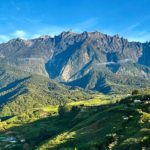Malaysia is renowned for its astounding natural diversity, lively culture, and impressive urban environments. The United Nations Educational, Scientific, and Cultural Organisation (UNESCO) has designated more than 1,000 sites as UNESCO World Heritage Sites, and Malaysia is home to 4 of them.
What is a UNESCO World Heritage Site?
A geographic location chosen for the International World Heritage programme of the United Nations Educational, Scientific, and Cultural Organisation is known as a UNESCO World Heritage Site. The goal of the program is to identify and protect places with exceptional cultural or natural value to humanity’s collective history. Although the World Heritage Committee has a list of World Heritage Sites, they do not conduct independent reviews; in reality, each national government lists them.
Since 1972, UNESCO has collaborated with nations all around the world to identify World Heritage sites and safeguard them for future generations. World Heritage sites include locations such as the Serengeti in East Africa and the Pyramids in Egypt.
In three categories—cultural (like a temple), natural (like a rainforest), and mixed (when both cultural and natural elements exist at the same location) —there are more than 1,000 sites on the World Heritage List. When taken as a whole, the heritage sites showcase the diversity of our world and the people that have resided there.
Through art, architecture, religion, industry, and much more, they showcase the advancement of human history over thousands of years and celebrate the best aspects of who we are as a species. They belong to us – to be shared, loved, and respected. Humanity would suffer an irreparable loss if they vanished!
How Many UNESCO World Heritage Sites in Malaysia?
Currently, Malaysia has four World Heritage Sites. Two are listed to be natural while the other two as listed as cultural. Given that Georgetown and Malacca are both classified as “Historical Cities of the Straits of Malacca,” some people would argue there are actually five sites.
UNESCO World Heritage Sites in Malaysia
1. Melaka and Georgetown, Historic Cities of The Straits of Malacca
Melaka and Georgetown were added to Malaysia’s list of UNESCO World Heritage sites in 2008 to symbolise 500 years of East-West cultural and commercial interchange. Melaka and Georgetown are the two major centres that make up this UNESCO World Heritage site. The historical and colonial background of the cities is well-known among locals and tourists alike.
Melaka, also known as “The Historic Town,” is located in West Malaysia’s southernmost region, close to the Strait of Malacca. The architectural structures, such as A Famosa Fortress and Dutch Square, represent the 15th-century Malay sultanate and the 16th-century Portuguese and Dutch periods in Melaka’s history.
The historic town was the birthplace of Peranakan culture and has a unique multicultural interchange between East and West. The magnificent cultural heritage and majestic structures entice tourists from around the world to stop by and experience Melaka via the five senses of sight, taste, hearing, smell, and touch.
Due to the way its homes and businesses reflect the British era from the end of the 18th century, Georgetown is recognised as a piece of global heritage. Georgetown was a part of the Straits Settlements, which included Singapore and Malacca before becoming a British crown colony in 1867.
Georgetown amassed a sizable eclectic collection of colonial and Asian architectural styles as a result of the mixing of the different races and religions there. In addition, it became known as Malaysia’s culinary capital due to the enduring popularity of its street food scene, which is still worth exploring today.
The Malaysian State of Penang marks Georgetown Penang Heritage Day on the 7th of July every year as a regional public holiday. This holiday honours the day in 2008 when Georgetown was inducted into the UNESCO World Heritage Site List.
2. Kinabalu Park, Sabah
One of the most visited national parks is Kinabalu Park, also known as UNESCO World Heritage Site Malaysia, where visitors may discover Sabah’s lush rainforest and Malaysia’s famous Mount Kinabalu. The national park is home to more than 5,000 different plant species and 400 different bird and mammal species.
Enjoy the beautiful scenery of the rainforest while taking on the task of hiking Mount Kinabalu’s peak. You’ll also get to discover its countless plant and animal species, including the Rafflesia, the largest and most pungent flower in the world. Do visit the Dusun villages to discover more about their historical and cultural heritage!
3. Archaeological Heritage of the Lenggong Valley, Perak
Lenggong Valley, the most recent site to be added to the UNESCO World Heritage Site Malaysia list in 2012, is home to two clusters of archaeological sites that span one of the world’s longest cultural sequences in a single locale.
This unique Palaeolithic site, which covers 399 hectares and is situated along the Perak River valley, is the earliest location outside of Africa where human remains have been discovered in a single area. It is believed to date back 2 million years. The oldest and most complete human skeleton in the area, known as Perak Man, was found in one of the caves and is thought to be about 10,000 years old.
Skeletons, cave art, and an outdoor museum are all on display at Lenggong. In addition, there are priceless discoveries including jewellery, pottery, utensils, and weaponry that can be explored here.
4. Gunung Mulu National Park, Sarawak
In the year 2000, UNESCO designated this natural region as a World Heritage site. On the island of Borneo, it is situated in the heart of Sarawak. A magnificent rainforest backdrop surrounds the park’s caves and karst structures. Several scientists have investigated and analysed the caves as part of the Mulu Caves Project. The largest cave chamber in the world, Gunung Mulu and Sarawak Chamber is a towering pinnacle that will undoubtedly astound you.
Numerous captivating activities, including trekking and caving expeditions, are available at Gunung Mulu National Park. Mulu’s Canopy Skywalk offers the opportunity to enjoy the longest tree-based canopy skywalk in the whole world. Gunung Mulu National Park is the most investigated tropical karst region on Earth with 295 km being explored.
Ride with TREVO
The idea of exploring the UNESCO World Heritage Sites in Malaysia sounds so interesting, right? To make your trip even better, you can find your preferred car and rent a car with TREVO to travel around these places! Book a car and drive to Malaysia’s breathtaking UNESCO World Heritage Sites!



